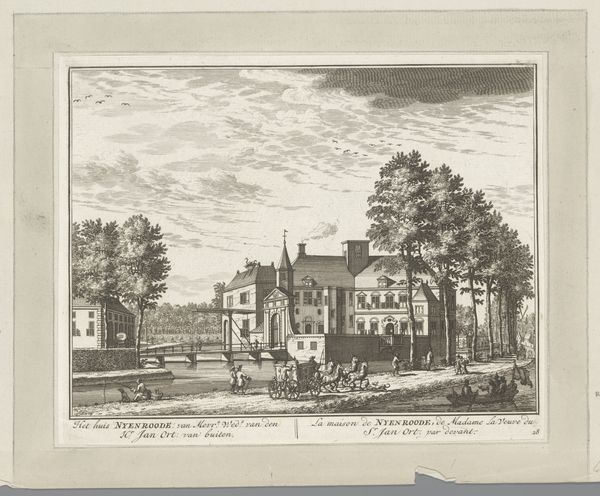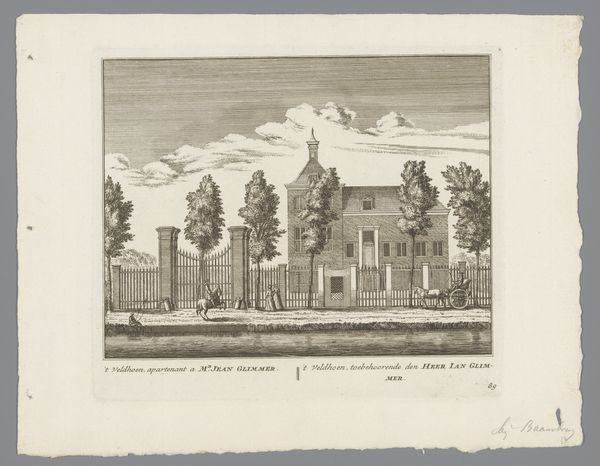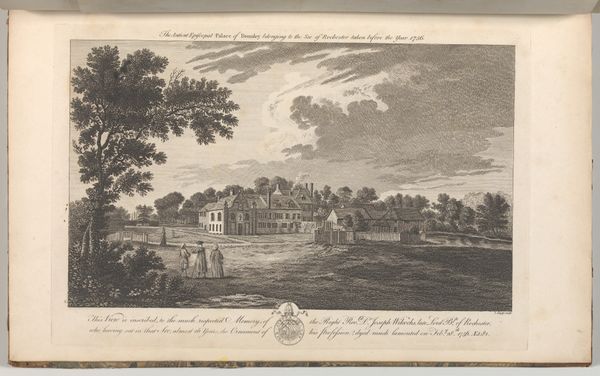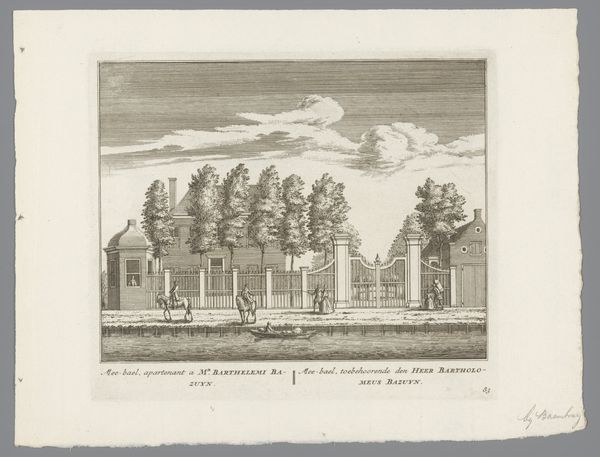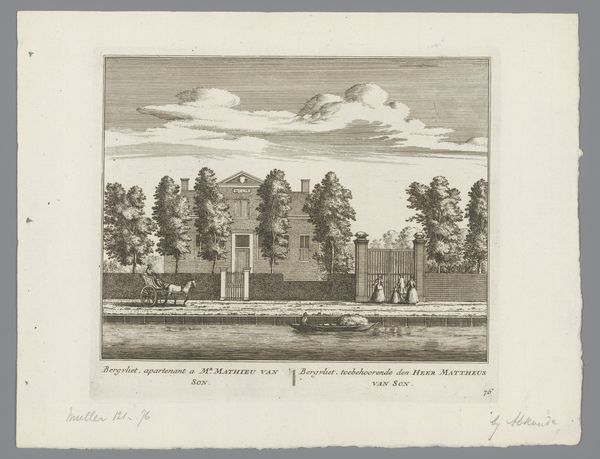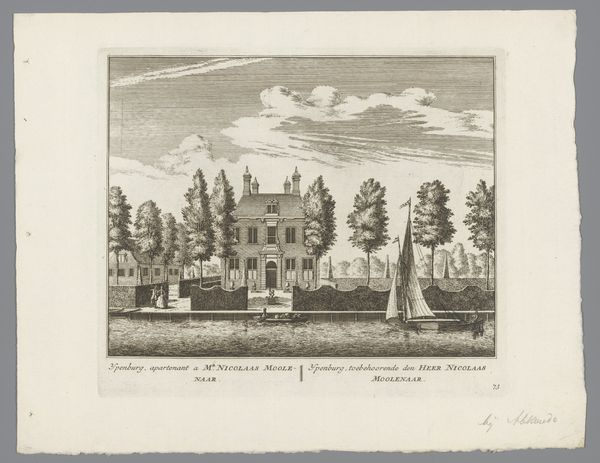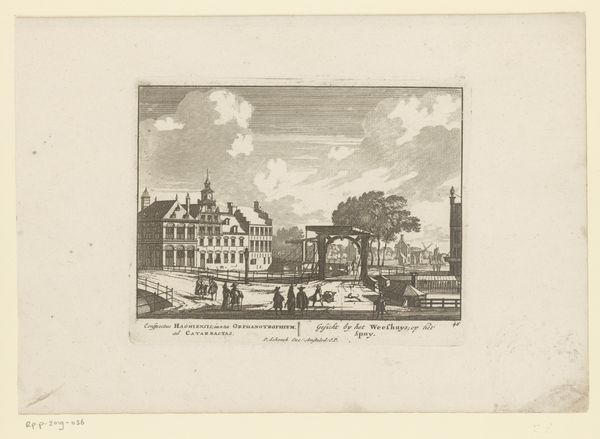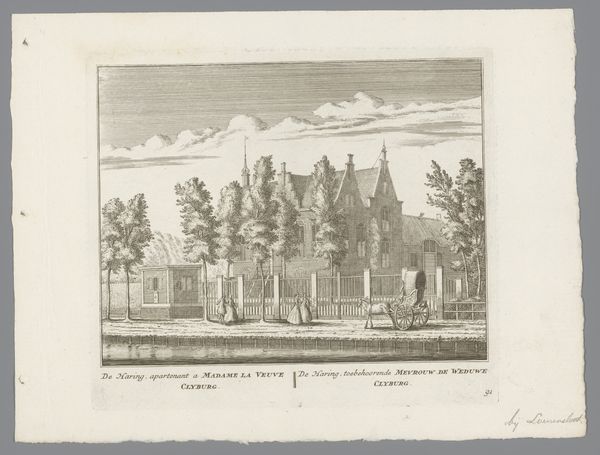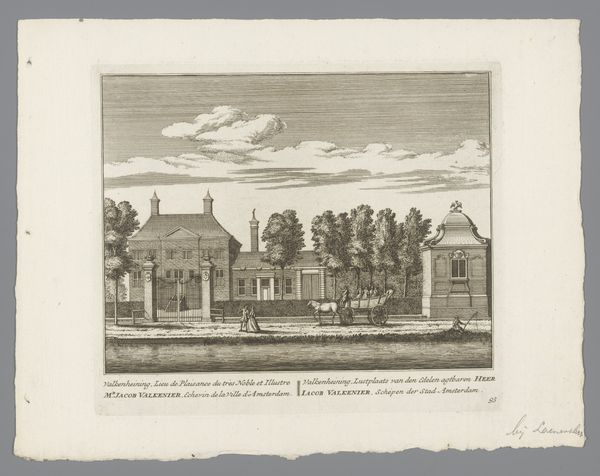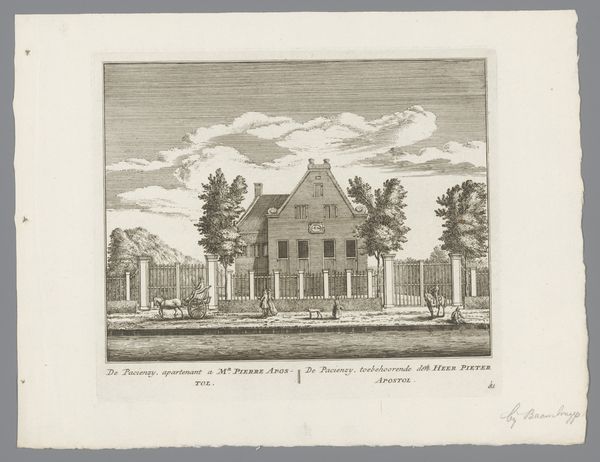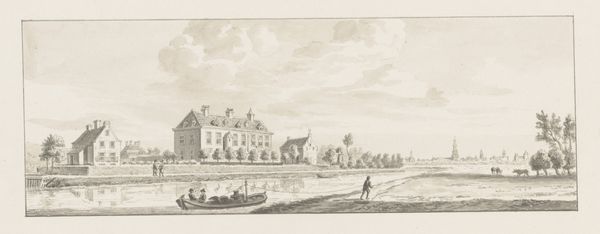
drawing, print, etching
#
drawing
#
baroque
# print
#
etching
#
landscape
#
genre-painting
Dimensions: height 172 mm, width 200 mm
Copyright: Rijks Museum: Open Domain
Editor: This is "Gezicht op de buitenplaats Postwijk, in Abcoude," or "View of the Postwijk Estate in Abcoude" created around 1730 by Abraham Rademaker. It’s an etching, currently held at the Rijksmuseum. What immediately strikes me is the composition—very structured and balanced. What do you see in this piece? Curator: Indeed, the balanced composition is quite deliberate. The symmetry, bisecting the work, draws immediate focus to the estate, flanked by those elegantly placed trees. Rademaker’s control over line and form is evident. Consider the density of the etching lines—how does that create a sense of depth and volume in the architecture? Editor: The closer lines in the building’s facade really do create depth. It's almost like he's sculpting with ink! But isn't landscape a somewhat atypical genre painting? Curator: The categorization of landscape art during the Baroque period involves interpreting landscape motifs. Genre scenes often imply social commentary through symbolism in color, shadow and formal rendering techniques. This leads us to consider, what aspects of daily life is Rademaker hoping to highlight through structure? The carefully cultivated landscape suggests order and control. The formal arrangements are very evocative! Editor: That's a great way to put it! Now I see it's less about just the landscape, and more about what the landscape represents: control, status, and even an ideal of order. Curator: Precisely. We glean insight from Rademaker’s expert line work through these aesthetic features and come to appreciate this piece. The formal qualities aren't merely decorative. Editor: I’m beginning to understand how close formal examination reveals more about cultural values! Curator: Exactly. Form follows—and often reveals—function!
Comments
No comments
Be the first to comment and join the conversation on the ultimate creative platform.
